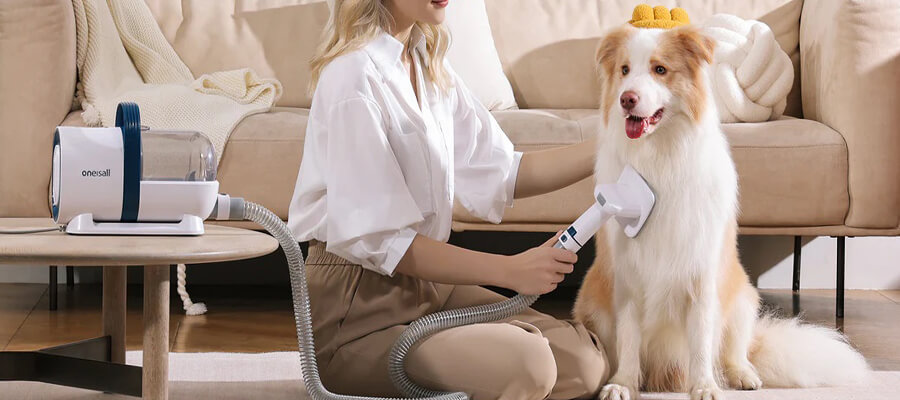
Best Tips for Grooming Dogs with Long Hair
Expert Tips for Grooming Long-Haired Dogs
Introduction
Grooming a long-haired dog can be both rewarding and challenging. With their luxurious coats comes the responsibility of maintaining their health and appearance. Regular grooming is essential to prevent matting, tangling, and skin issues. In this guide, we’ll explore the best tips and techniques for grooming long-haired dogs, ensuring they look their best while also feeling comfortable.
1. Invest in the Right Tools
Having the proper grooming tools is crucial for efficiently managing a long-haired dog’s coat. Here are some essential tools to consider:
- Slicker Brush: This brush effectively removes tangles and loose hair from your dog’s coat. Use it regularly to keep their coat smooth and free of mats.
- Wide-Toothed Comb: A wide-toothed comb is perfect for detangling and removing knots, especially after a bath when the coat is damp.
- De-shedding Tool: For breeds that shed heavily, a de-shedding tool helps remove undercoat fur, reducing shedding around the house.
- Grooming Scissors: Use blunt-tipped scissors for trimming hair around sensitive areas like the eyes and paws.
2. Establish a Regular Grooming Schedule
Essentials for Your Newly Adopted Pet
Welcoming a shelter pet into your life is a beautiful journey. Here are some handpicked items to help your new friend feel safe, loved, and right at home:
Consistency is key when it comes to grooming long-haired dogs. Establish a regular grooming schedule based on your dog’s coat type and lifestyle. Here’s a general guideline:
- Daily Grooming: For breeds like Shih Tzus and Afghan Hounds, daily grooming is ideal to prevent mats and tangles.
- Weekly Grooming: Breeds like Golden Retrievers may require grooming once a week to manage shedding and maintain coat health.
- Bathing Routine: Long-haired dogs should be bathed every 4 to 6 weeks, depending on their activity level. Use a dog-friendly shampoo and conditioner to keep their coat healthy.
3. Start with a Brush
Before bathing your long-haired dog, start with a thorough brushing session. This helps remove tangles and loose hair, making bathing easier and more effective. Be gentle, especially in areas prone to matting, such as behind the ears and under the legs.
- Technique: Begin brushing from the tips of the hair and work your way up to the roots to avoid pulling and discomfort.
- Break It Down: If your dog has many tangles, work in sections, starting from the back and moving toward the front.
4. Use the Right Bathing Techniques
Bathing is essential for maintaining a long-haired dog’s coat, but it’s crucial to do it correctly:
- Water Temperature: Use lukewarm water to ensure your dog is comfortable during the bath.
- Shampoo: Opt for a mild, dog-specific shampoo that won’t strip their coat of natural oils. Follow with a conditioner designed for long-haired breeds to keep their coat soft and manageable.
- Rinse Thoroughly: Ensure all shampoo and conditioner are completely rinsed out to prevent buildup, which can lead to skin issues.
5. Drying Your Dog
Proper drying techniques are essential to prevent mats from forming in a long-haired coat:
- Towel Dry: After bathing, gently towel-dry your dog to remove excess water. Be gentle around the ears and face.
- Use a Blow Dryer: If your dog is comfortable, use a low-heat pet blow dryer to dry their coat. Maintain a safe distance to avoid overheating their skin.
- Brush While Drying: Brush your dog’s coat while drying to prevent tangles from forming as it dries.
6. Addressing Mats and Tangles
Mats can be painful for your dog and may require careful handling:
- Don’t Pull: Never yank at a mat; instead, gently work it apart using your fingers or a comb.
- Use a Mat Splitter: If the mat is severe, consider using a mat splitter, but be cautious not to hurt your dog.
- Trim Carefully: For stubborn mats, it might be necessary to trim them out using grooming scissors. Always cut away from the skin to avoid accidental injury.
7. Focus on Specific Areas
Certain areas of a long-haired dog are prone to matting and require special attention:
- Ears: Brush and check the ears regularly, as this area often collects tangles.
- Paws: Trim the fur around the paws to keep them tidy and reduce the risk of slipping.
- Tail: Pay special attention to the tail, as it often matts easily.
Conclusion
Grooming a long-haired dog may require extra effort, but the rewards of a healthy, beautiful coat are worth it. By investing in the right tools, establishing a grooming routine, and employing the proper techniques, you can keep your long-haired dog looking their best while ensuring their comfort and well-being. Regular grooming not only enhances your dog’s appearance but also strengthens your bond as you spend quality time together. Remember, patience and consistency are key to achieving the best results!
Affiliate Products
We may earn a small commission when you shop through our links — it helps us keep sharing love and care for every dog out there, at no extra cost to you.
Up to 75% Discount

Dog Collar with Health Monitoring
BUY NOW »
Up to 55% Discount

Luxury Faux Furhuge Napping Bed
BUY NOW »

